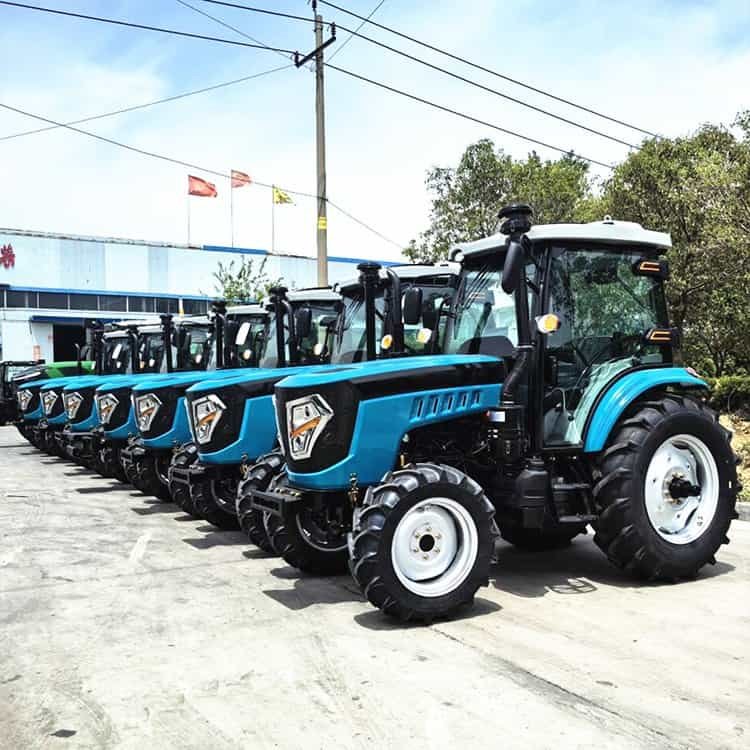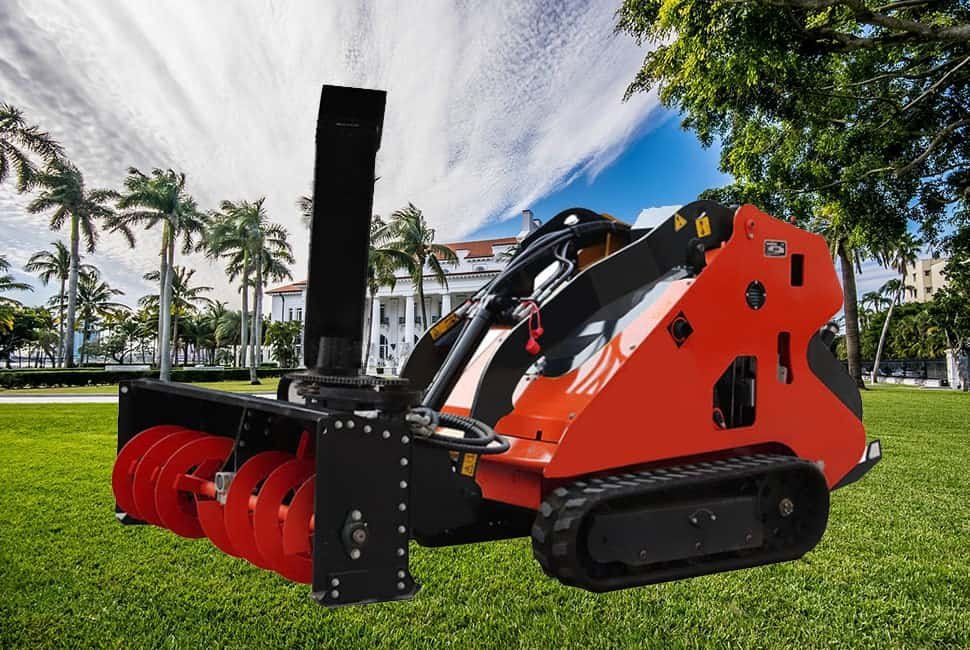Choosing the right tractor based on soil type is critical for ensuring agricultural success. An incorrect selection may lead to inefficiencies and wasted resources.
Soil type plays a significant role in agricultural productivity. Different soil types affect how well crops grow and how easy they are to cultivate. For farmers, understanding the characteristics of their soil can significantly influence their choice of machinery. The relationship between soil type and tractor performance is complex, as each type of soil has unique properties that affect traction, power requirements, and overall agricultural efficiency.
What Are the Key Considerations When Choosing a Tractor?
When choosing a tractor, there are several key considerations to ensure you select the best option for your needs:
1. Power and Torque
You’ll want to ensure the tractor’s horsepower aligns with the demands of your soil type and the tasks you plan to undertake. For example, if you are engaged in heavy tilling in compacted soils, you’ll need a tractor with higher horsepower. Conversely, if your tasks are lighter, a less powerful tractor may suffice. Understanding your power requirements is crucial for optimal performance.
2.Weight and Traction
The weight of your tractor can significantly impact its traction. A heavier tractor provides better traction in soft or wet soils, but keep in mind that it might also lead to soil compaction. It’s important to find the right balance between weight and soil preservation, as excess compaction can negatively affect crop yields.
3. Attachments and Versatility
Consider the variety of attachments you may need, such as plows, cultivators, and seeders. Selecting a tractor compatible with your existing equipment or one that allows for easy adaptation to different tasks will enhance your tractor’s functionality and overall utility.
4. Hydraulics
Assessing the hydraulic capacity of the tracteur is essential for effectively operating various attachments. Make sure the hydraulic power meets your needs, especially for tasks that involve lifting and moving materials.
5. Comfort and Ergonomics
Remember, a comfortable operator is a productive one. Look for features such as adjustable seats, climate control, and good visibility to enhance your working experience—especially during those long hours in the field. Prioritizing comfort can make a significant difference in your overall efficiency.By considering these factors, you can ensure that you choose a tractor that best suits your agricultural needs and enhances your productivity.
What Type of Soil Do You Want If You Are a Farmer?
1. Sandy Soil
If you have sandy soil, you’ll appreciate its excellent drainage properties, but you should also be aware that it typically has low nutrient retention. This type of soil demands frequent irrigation and fertilization. When working with sandy soil, consider choosing lighter tractors that can efficiently navigate the specific challenges this soil presents.
2. Clay Soil
If clay soil is what you’re dealing with, keep in mind that it is dense and heavy, retaining moisture but often becoming compacted. This soil type can pose significant challenges for tilling and likely requires a powerful tractor for effective management. Opting for heavier tractors with larger tires can enhance traction and reduce the risk of soil compaction in clay-rich environments.
3. Loamy Soil
If you’re fortunate enough to work with loamy soil, you’ll find it to be a mix of sand, silt, and clay, making it ideal for farming due to its balanced nutrient retention and drainage capabilities. For loamy soils, versatile tractors with a range of horsepower options are often the best fit, as they can handle a variety of tasks, from tilling to planting.
4. Silty Soil
If your soil is silty, it retains moisture well but can also become compacted. Silty soil is well-suited for crops that thrive in moderate moisture conditions. In this case, you should opt for tractors with strong hydraulic power to effectively manage your attachments in silty soils.
By understanding the type of soil you have, you can make informed decisions that will enhance your farming practices and improve your productivity.

Which Soil Type Is Most Suitable for Farming and Why?
If you’re looking for the most suitable soil type for farming, loamy soil is often rated the best option due to several key advantages:
1. Nutrient Balance
Loamy soil offers an optimal balance of nutrients, making it ideal for a wide variety of crops. The combination of sand, silt, and clay promotes good nutrient retention without the risk of waterlogging, ensuring that your plants receive the essential nutrients they need to thrive.
2. Moisture Retention
Thanks to its structure, loamy soil retains moisture effectively without becoming overly saturated. This quality guarantees that your crops have consistent access to water, which is crucial for their growth.
3. Aeration
Loamy soil excels in aeration, which fosters healthy root development. Good aeration allows roots to access oxygen, vital for nutrient uptake and overall plant health.
4. Ease of Tillage
You’ll find it easier to work with loamy soil because it can be tilled without excessive effort. This ease of tillage enables more efficient planting and cultivation processes, ultimately leading to higher productivity.
Which Tractor Is Best for Cultivation?
The best tractor for cultivation largely depends on the type of soil you’re working with and the specific tasks you need to perform. Here are some recommendations based on different soil types:
1. For Sandy Soils
If you’re working with sandy soils, a lighter tractor with moderate horsepower is often sufficient. Look for models that offer good maneuverability and come equipped with attachments specifically designed for cultivating and seeding in loose, well-drained soils.
2. For Clay Soils
When dealing with clay soils, a heavier tractor with high horsepower is essential for breaking up compacted soil. Tractors equipped with large tires provide better traction, reducing the risk of soil compaction and enabling efficient tillage and cultivation.
3. For Loamy Soils
If you have loamy soils, versatile tractors with a range of horsepower options are ideal. These tractors can handle various tasks, from tilling to planting, making them suitable for diverse farming operations.
4. For Silty Soils
For silty soils, you’ll benefit from a tractor with strong hydraulic power that can manage attachments designed to aerate and prepare the soil effectively. Selecting a tractor with the right hydraulic capabilities will ensure efficient operation in these soils.

How to Choose the Right Tractor Based on Soil Type?
Choosing the right tracteur for your soil type can significantly enhance your work efficiency and reduce resource waste. Here are some steps to guide you:
1. Analyze Soil Structure
The first step in selecting the right tractor for your farming needs is to conduct a comprehensive analysis of your soil’s structure. Soil structure refers to the arrangement of soil particles and the spaces between them, which can significantly affect water drainage, root penetration, and nutrient availability. Pay close attention to the moisture content, as it determines the soil’s ability to support machinery without compaction.
To analyze your soil, you can perform a simple test by taking a handful of soil, moistening it, and trying to form a ball. If it holds together, the soil is likely clayey; if it crumbles, it may be sandy or loamy. Additionally, consider conducting a soil test to determine pH levels, nutrient composition, and organic matter content.
Understanding these characteristics not only aids in determining the appropriate size and power of the one you need but also guides you in making informed decisions about soil amendments and crop rotation practices.
2. Consider Attachment Compatibility
After assessing your soil’s characteristics, the next step is to evaluate the types of attachments you’ll need for your agricultural practices. Each soil type often requires specific equipment to maximize efficiency and effectiveness.
For example, if you have heavy clay soils, attachments like subsoilers or heavy-duty plows may be necessary to break up compacted layers, while lighter sandy soils might only require standard tillers. It’s crucial to ensure that the machine you select is compatible with these required attachments, both in terms of power requirements and physical connections.
Compatibility extends to the size and weight of attachments as well; a larger machine may be needed to pull equipment that is designed for heavier workloads, while smaller machines might be used with lighter equipment. Take time to research different attachment options and consult with manufacturers to ensure they match your machine’s specifications and your farming practices.
3. Evaluate Terrain and Crop Type
The landscape of your farm and the specific crops you intend to grow play pivotal roles in determining the right tractor for your needs. Various terrains, whether hilly, flat, or uneven, can affect a tractor’s performance, as different machines are designed for various terrains.
Gathering expert advice not only leads to informed decisions but also connects you with a network of resources, ensuring ongoing support throughout your farming journey.
4. Seek Expert Advice
Consulting with agricultural experts or local extension services can provide valuable insights into the best tractor options for your specific soil types and farming conditions.
Résumé
Choosing the right tractor based on soil type is a critical factor for achieving agricultural success. By considering various aspects, including power, weight, and versatility, you can optimize your equipment selection and enhance your productivity.


